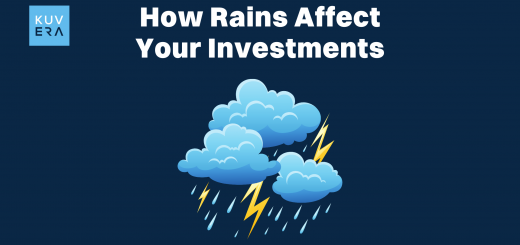Mr. Bose bought 50 shares of XYZ in May 2019 at Rs. 1200/share. His total investment of Rs. 60,000 appreciates to Rs. 1,25,000 after three years as the stock price rises to Rs. 2500/share.
To compute his investment growth rate over the three years, Mr. Bose uses the compound annual growth rate (CAGR) formula. After a simple calculation, he finds out that his investment has risen by 27.7% annually. He can now finally keep investing in peace.
Please keep reading to know more about CAGR, how it works, and the advantages of using CAGR, to name a few.
What Is the Compound Annual Growth Rate?
The need for a remarkable calculation to identify the growth pattern is crucial. CAGR measures the annual growth rate of investments over time. Instead of giving an idea of the absolute growth rate, the annual growth rate formula gives an average yearly growth pattern.
Over time, investments grow but at varying rates. To truly understand the potential annual growth rate, an investor wishes to know the average annual growth rate. Often considered a symbolic figure, CAGR assumes a uniform growth rate.
Difference between Simple and Compound Annual Growth Rate
A simple annual growth rate is the constant percentage increase in investments annually. Investors can easily see their investment growth using a simple annual growth rate formula, i.e. (ending value/original value -1).
In comparison, CAGR measures the earning potential of an investment value compounded over the number of years it is allowed to grow. Thus, investors can obtain an exponential growth frequency which is generally higher than a simple growth rate.
The growth rate is seldom linear. To evaluate business growth over time, one should apply the compound growth rate and compare returns from different funds. In the long run, it helps make better investment decisions.
How does CAGR work?
Analyzing funds using a compound annual growth rate provides an approximate rate of investment growth. For example, if Mr. Bose invests a certain sum in ELSS for six years, he needs to estimate the reinvestment returns every year.
Investors in a volatile market structure should understand the fund performance with variable growth rates. Thus, CAGR is not a sales indicator since the growth rate is variable. The compounded rate may hide the sub-trends for an investment exceeding ten years (e.g.).
The CAGR Formula
Measuring the compound annual growth rate of a particular stock is simple. The calculation formula is given below:
CAGR = (Final Value/Beginning value)^(1/investment period) – 1
To calculate the CAGR of Mr. Bose’s investment worth Rs. 60,000 invested over three years. One can use the above formula.
Thus, the final value of Mr Bose’s investment = (1,25,000/60,000)^(1/3) – 1 = 27.7% (approx.)
CAGR and Risk
The compounded annual growth rate helps compare stock performance and helps determine how the investment portfolio has reshaped itself. Since investors deal with multiple investment ventures with varying risk potential, identifying the ones worth opting for becomes essential.
However, this statistic does not account for the inherent risks of equity investment. In such cases, identifying risk-adjusted returns is essential. Other statistical measures like the Sharpe and Treynor ratios might be helpful in such cases.
How to Calculate CAGR?
Various online tools help calculate some very crucial indicators regarding investment decisions. For example, investors can calculate the return earning potential of their investment portfolio by simply filling in some details.
The CAGR calculator needs three variables, viz., the beginning value of an investment, the final value of the investment, and the timespan. This simple utility tool will help compare the return generating capacity of investments. Investors can thus reach their potential based on past returns and take necessary action.
Advantages of Using the CAGR
Investors believe that, unlike the average annual growth rate, the compounded rate helps diminish the effects of volatility. Some of its inherent advantages are as follows:
- CAGR formula calculator enables investors to calculate the return on investment. For objective-oriented investments, it helps calculate the rate of growth over time.
- To determine their effectiveness and market volatility, investors can use CAGR values for different investment units in their portfolios.
- Two investments with the same CAGR value might not reflect a similar growth rate. The growth rate of one may be faster in one year than the other, implying that one is more lucrative.
Final Word
Investors claim that identifying lucrative stocks is the crucial first step to yielding higher returns. To reach their desired goal, individuals can use the CAGR to understand the true potential of a stock.
Frequently Asked Questions
-
What should be the value of a promising CAGR in the case of personal investments?
Investors often opt for multi-asset investments to strengthen their portfolios. Different investment types carry different CAGRs. Typically a range of 8.5% – 11.5% is considered substantial and high-yielding.
-
Can an investor receive a return equal to his original investment?
It depends on identifying stocks that can yield high returns. To deploy capital and remain invested for years. One should calculate CAGR for that stock. Using the CAGR formula, one can easily calculate the number of years it will take for the investment to reach its desired amount.
Interested in how we think about the markets?
Read more: Zen And The Art Of Investing
Watch/hear on YouTube:
Start investing through a platform that brings goal planning and investing to your fingertips. Visit Kuvera.in to discover Direct Plans and Fixed Deposits and start investing today.
#MutualFundSahiHai #KuveraSabseSahiHai!











